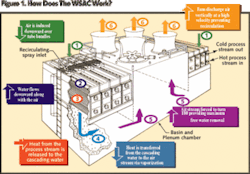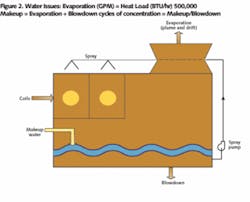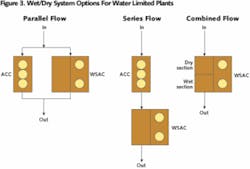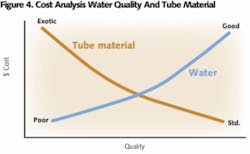Water Conservation with Closed-Loop, Evaporative Cooling for Process, Power Applications
Water availability, restrictions and quality are increasingly important considerations in facility design and operation. Closed-loop, evaporative cooling is a cost-effective heat transfer technology that also optimizes scarce water resources.
Coolers, such as the Wet Surface Air Cooler (WSAC), are used in a variety of process, petrochemical and industrial facilities for fluid and gas cooling (water, water/glycol, oil, fuels, food ingredients) and vapor condensing (vacuum steam, hydrocarbons, refrigerants).
Principle of Operation
The basic operating principle of an evaporative cooler is heat is rejected by means of latent (evaporative) heat transfer. The fluid/vapor that needs to be cooled or condensed flows through tube bundles as part of a closed-loop system. A large quantity of water is pumped from the unit basin and sprayed downward over the tubes. Simultaneously, fans induce air over the bundles in a co-current direction. Evaporative cooling takes place at the exterior tube surface. The saturated air stream makes two 90° turns within the unit plenum and is discharged out through the fan stacks (see Figure 1). The co-current flow of air and water allows for an unobstructed spray system fully accessible for observation and maintenance, and protects the tubes from freezing. Co-current flow also ensures complete coverage of tube surfaces, sharply reducing fouling potential.
Alternative Technologies
There are two other cooling system configurations:
Open cooling tower/heat exchanger - where the process stream is cooled in a heat exchanger using tower water;
Dry, air-cooled systems - where the process stream is cooled inside a finned coil with air being passed over it.
In many applications, the evaporative cooler has distinct advantages as compared to these systems:




